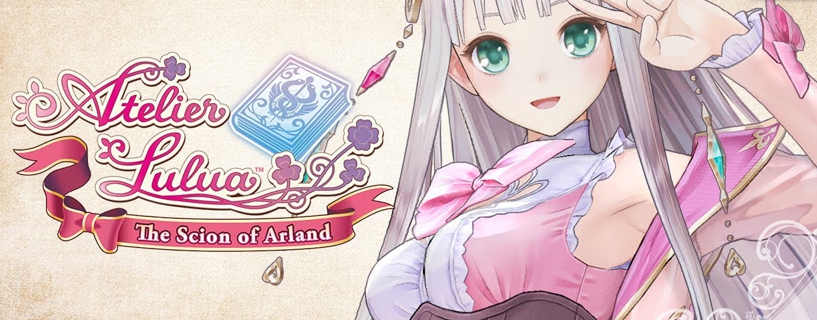If you take the time to look back through our archives, you will notice we reviewed the Arland Trilogy. Well now there’s been an addition so suddenly that all those reviews need editing. It is now the Arland Quadrilogy! Yes it’s time to revisit Arland and meet the next generation of Alchemists.
Type: Single-player
Genre: JRPG
Developer: KOEI TECMO
Publisher: KOEI TECMO
Release Date: 21 May, 2019


A Brief Arland History Lesson
Back in the day, a pie-obsessed lady was taught Alchemy from her twisted and devious teacher. She was happy to learn the secrets of alchemy and was even happier to learn she could make her pies with that knowledge. Rorona Frixell soon became the Alchemist of Arland. Due to being a little clumsy and despite not being a very good teacher herself, she managed to stumble into the life of Totori who became her student in the ways of alchemy. Totori used alchemy to try to find her mother and to become the Adventurer of Arland. One of those adventures led her to meet Princess Meruru who then became her apprentice, and Piana who she inadvertently rescued from a life of sacrifice. Meruru used her alchemy to expand her small kingdom into a much larger and thriving one so that it could join the Republic of Arland. Piana studied alchemy under Rorona once Totori had learned all she could. If you take a look at that chain of events, most of it probably wouldn’t have happened if it wasn’t for Rorona. The same can be said for Lulua’s story. Lulua Frixell is Rorona’s daughter and the student of Piana. Small world isn’t it?
Review
Atelier Lulua: The Scion of Arland is true to its roots game, taking the best elements of its predecessors and leaving out the worst bits. Alchemy, while still simpler than in the Mysterious series, is a little more involved than the previous Arland titles. I’m torn on which system I like better at this point. The one in Lulua is a nearly flawless blend of the simplicity of the previous Arland games with a layer of complexity added to it that made you have to think about what elements you were dumping into the cauldron. The one in the Mysterious series felt more involved but had some potentially onerous elements to it such as worrying about the individual shapes of objects and fitting them to a small grid. Another thing that makes Lulua a welcome entry to the Arland series is that time has little impact on the story. My one big complaint about Atelier Rorona was the fact it felt so very rushed. Not that the game itself felt rushed, it was that the story itself forced you to move through it quickly. Atelier Firis also felt rushed but time didn’t put nearly as much pressure on you as Atelier Rorona did. I intend to replay Atelier Rorona one of these days and take it easier in the hope to get more out of the game than I did my first time through. It’s the only Atelier game that I didn’t manage to get to the true ending in my first playthrough simply because I felt I couldn’t take the time to truly enjoy everything. I’ve been told by others that they had the opposite experience with the timer, so it’s possible I just played that particular game very badly for some reason.
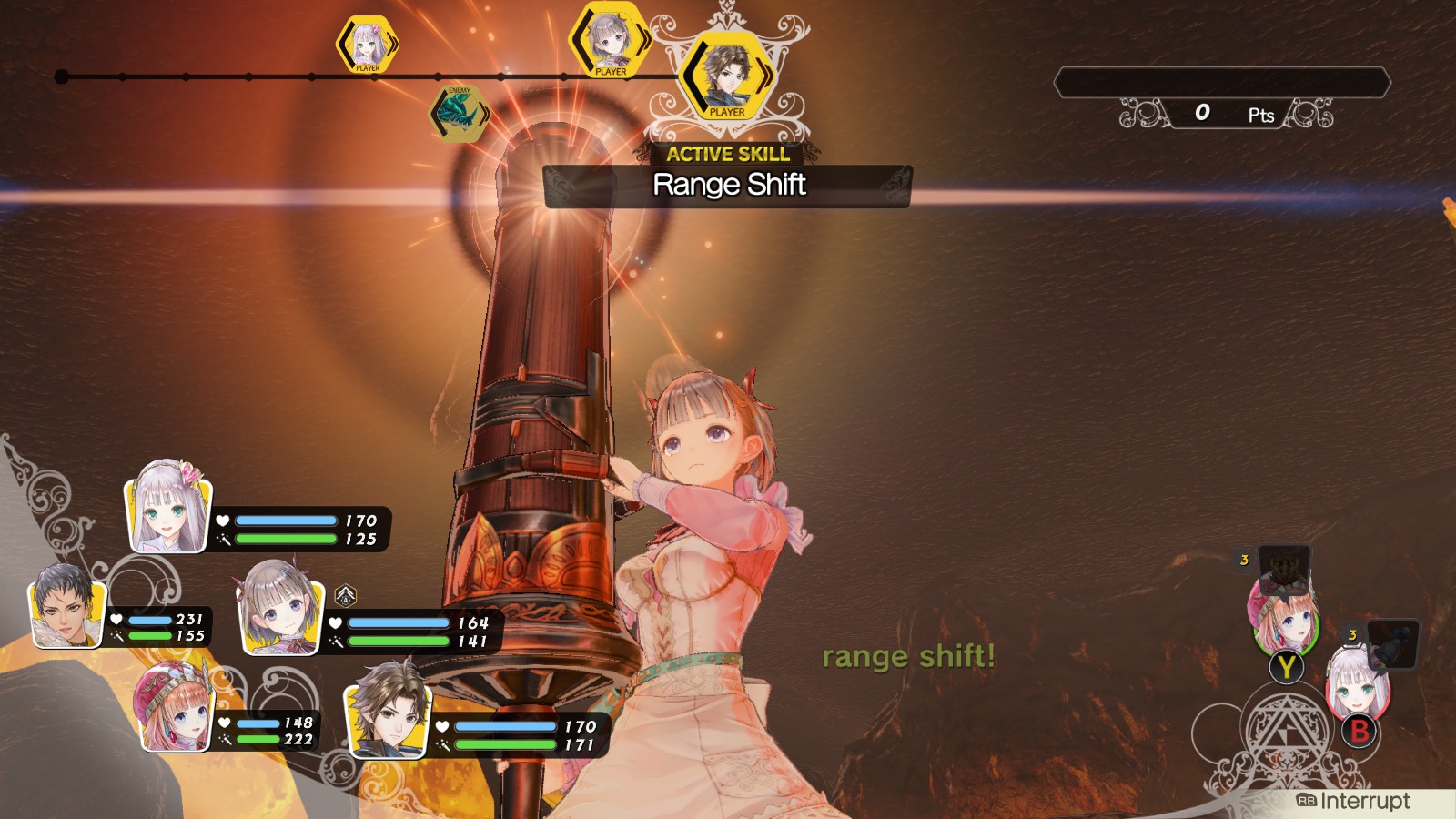
The story of Lulua is a little different than the previous games. Rorona, Totori and Meruru all had a purpose in mind when they set out at the start of their game. Rorona wanted to save her Atelier from closing, Totori wanted to find her mother, and Meruru wanted to grow her kingdom and join with the Arland Republic. Lulua, on the other hand, was out with her friend when a book fell on her head. This book, which would have felt right at home in the Mysterious storyline except Sophie was already the Alchemist of the Mysterious Book, guided Lulua to do various tasks for no real apparent reason. Any time Lulua was at a loss for what to do, the book would glow and give her a riddle to solve. Eventually, she figured out what the book was actually trying to do and where the book came from and ultimately saved the day.
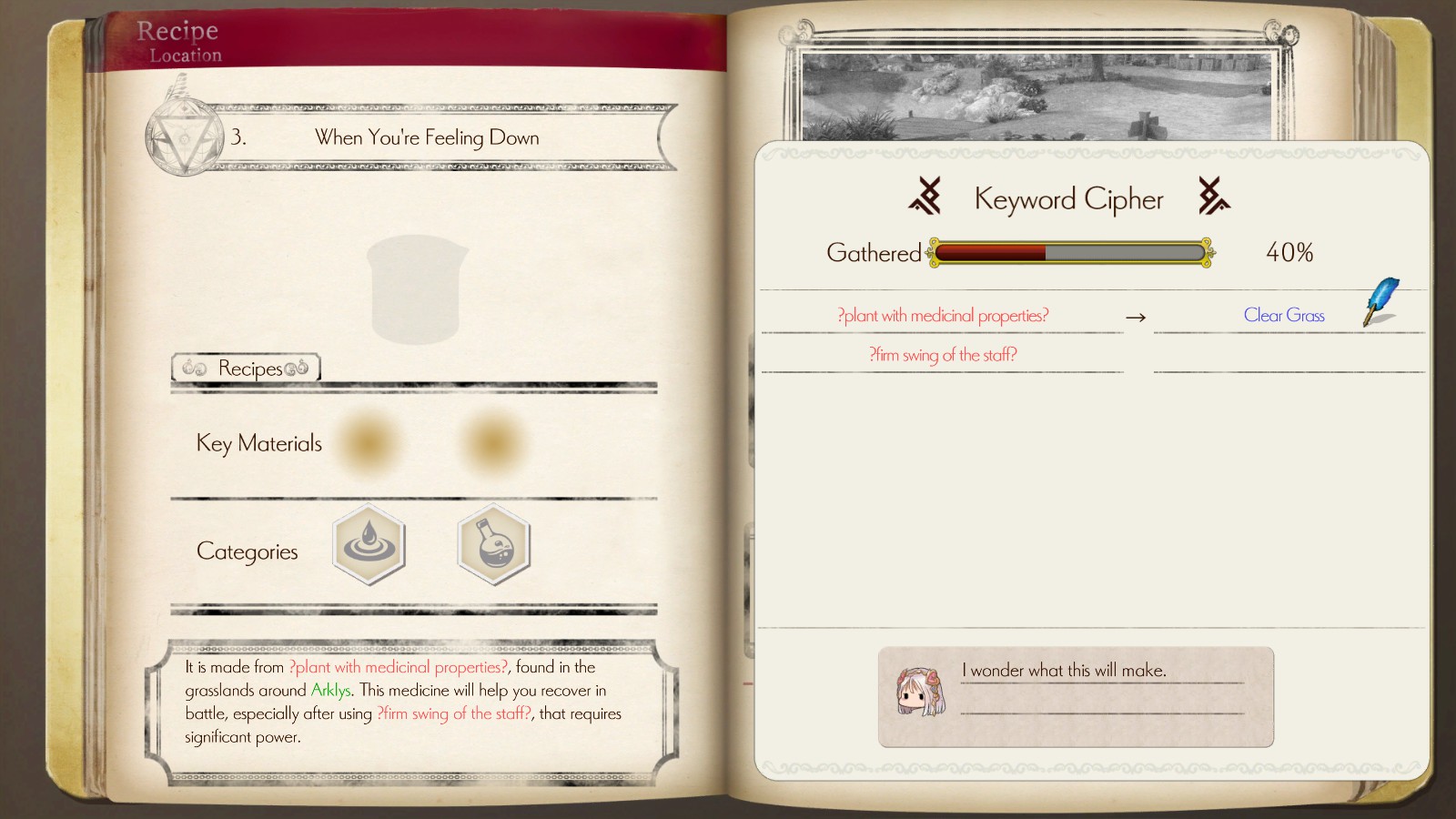
The combat in Atelier Lulua takes the best elements from the previous Atelier games as well. You have your main three characters out with two supporting characters that can be swapped in. Different character combinations can lead to different effects occurring so character interactions are something you will need to pay attention to. Your weapons, armor and accessories can be changed and if you were to have the DLC, your character outfits can be changed as well. The combat is turn-based and has the typical slider, this time at the top of the screen, that shows you the current turn order barring any delaying effects. Something new is the interrupt system, which in my opinion is a little overpowered at times, but something I enjoyed quite a bit. Once the interrupt ability charges up you can use it at any time, it doesn’t even have to be your turn! This allows you to use items that can change the course of battle in your favour. For example, are you badly hurt and about to lose? Interrupt the next enemy attack and use a healing item or a powerful bomb to destroy the enemy first! You have to plan ahead which item you want to use when you Interrupt, but luckily each alchemist in your party can have their own Interrupt item assigned to them and the alchemist doesn’t even need to be in the front line to use it. There are also ultimate attacks you can use once they charge up, but I found that they rarely charged up enough to use even against bosses before the battle was over. When you beat the game, even harder difficulties are unlocked so it is quite likely that ultimate attacks will become much more useful then.
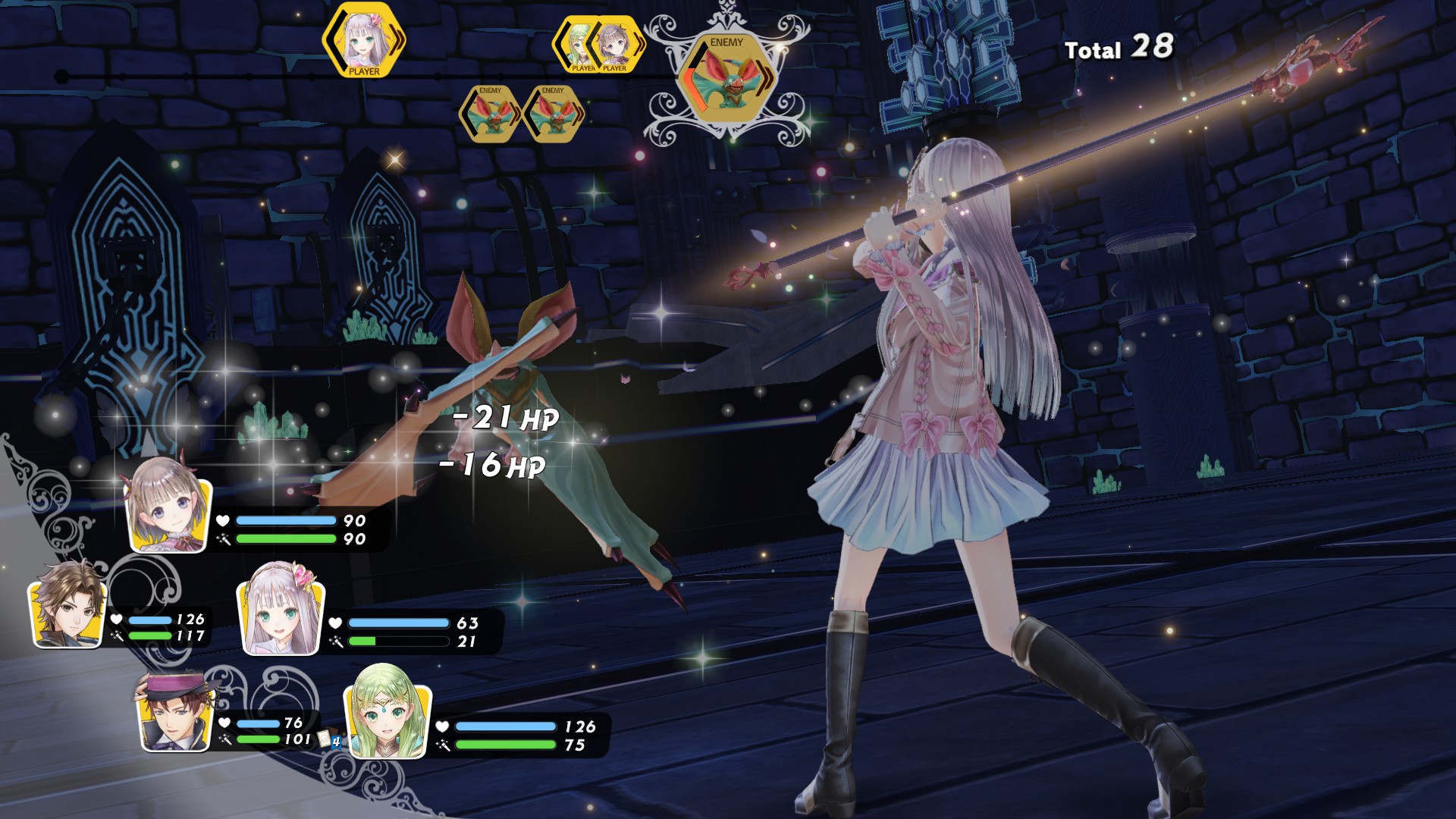
Atelier Lulua’s map allows her to walk between areas as she moves about. There are no interruptions when walking like there was in some other Atelier titles, so it is mostly just cosmetic and a way for time to progress. You will often find yourself revisiting areas simply for materials or because quests will send you there, but since time really doesn’t matter this time around you can move to them freely as many times as you want without jeopardizing your mission. Time really only has minimal impact to the game such as making certain items available to collect or enemies appear or having events in a city take place, other than that, time has no real meaning. It’s a bit refreshing while at the same time, loses the pacing and feeling of urgency that the timer-based Atelier games had. “This building is about to explode any minute now unless we stop it!” [Three in game years of picking regents and having conversations later] “Let’s go stop it!” I’m being a bit facetious, but if it was a timered Atelier game, a now or never situation is truly a now or never situation and not a now or whenever you eventually feel like it situation like it is in Atelier Lulua.
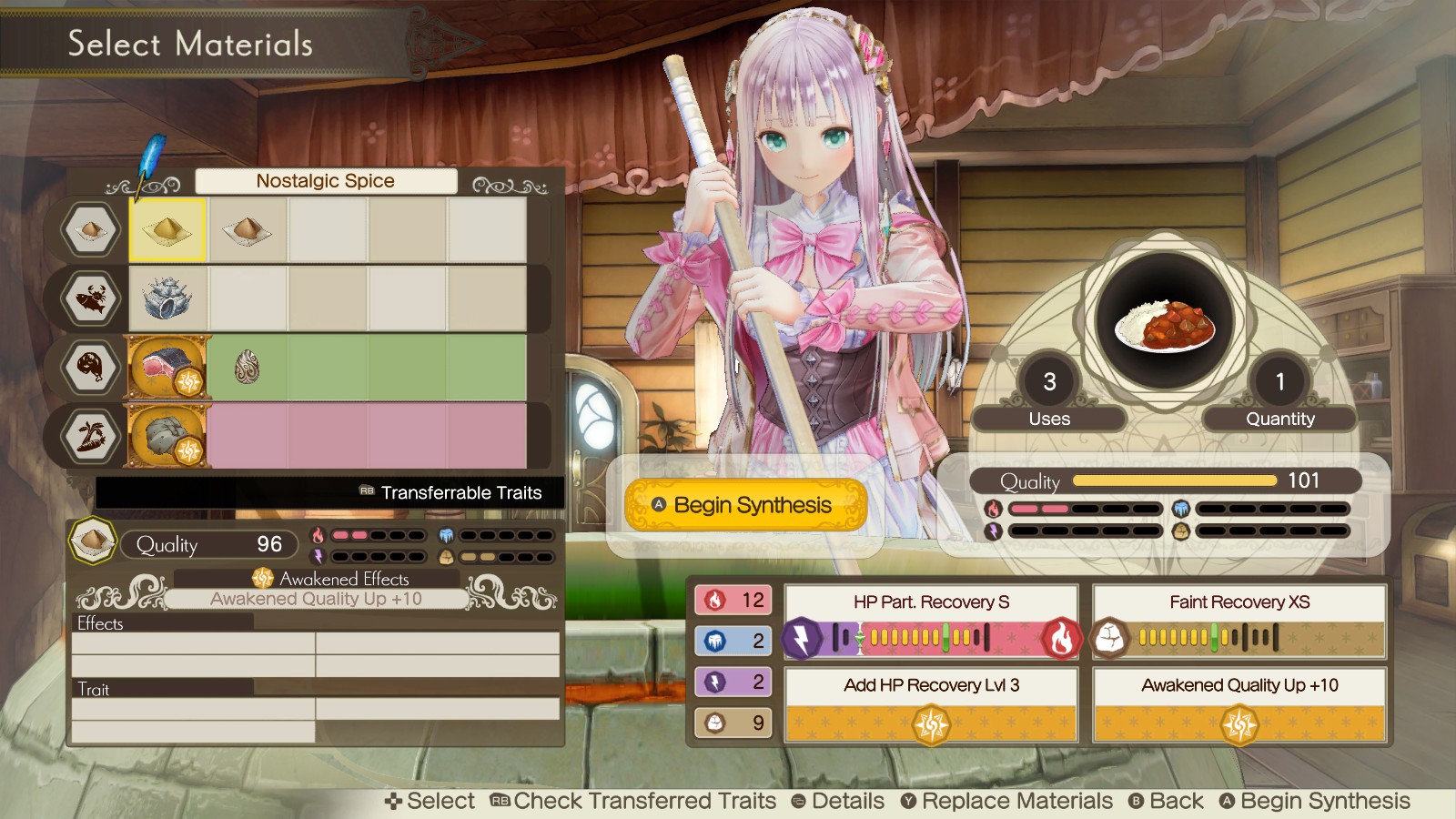
Alchemy, as mentioned earlier, is still a big part of the game and that is to be expected in an Atelier title. You will spend a decent amount of time making items either to use yourself, to push the story forward, or for fulfilling requests. Requests in this game have substantially less impact, as far as I can tell, than they did in previous games in the Arland series. Doing them will give you money and items, but not doing them doesn’t really seem to hurt you that badly. You will miss some content in the game but it doesn’t have any other major overarching impact to the ending or story like it did in the previous games. You could, in theory, skip them almost entirely if you were so inclined and still unlock the “True Ending” of the game. Alchemy, on the other hand, is needed to push the story forward so it isn’t something you can avoid if you don’t feel like doing it. As mentioned earlier, Alchemy can be quite complex beneath the surface, but on it is much simpler than it was in the Mysterious storyline.
For the most part, you can just dump anything you want in the cauldron and it should work out for you, but the elements that make up the items you are dumping in can have drastic impacts on your end results including potentially ruining them. Let’s give a comparative example. In a previous Atelier Arland game, the level of the alchemical item dictated your success rate. If the item was level 4, and your Alchemy level was 10, odds are you could make it without a problem. If, on the other hand, the item was level 14 you might be able to still make it but there is a very good chance you will mess it up and end up with a broken item. In Atelier Lulua, you can’t craft an item that is a higher level than your alchemy skill, but that doesn’t mean you can’t break it! As you add items to the mix they have certain elemental properties. If the elements are compatible, everything will go smoothly, but if they are not compatible, it may break the item if you are unable to salvage it with other items. Each item you make has elemental breakdowns for its components. For example, adding more fire-based elements will enhance the health restore of the item, but adding ice-based elements will enhance the magic restore of the item. These two are on the same slider so you can’t just toss a bunch of fire and ice together to make a super restorative because they will cancel each other out. Something else can happen as well. Let’s say you have an item that is enhanced by lightning, adding lightning-based items will make it more powerful, but adding earth-based elements will destroy it entirely rather than give alternate properties like in the fire and ice example. You will need to be careful when you are selecting your items for this reason but there is also another reason to be picky too. Items add traits as well to the end product. Selecting items that are both elementary complimentary and has the traits you want can be tricky, but well worth it in the end. There are actually additional factors that come in to play but that go beyond what this review is intending. Long story short, the alchemy in this game is probably the most enjoyable in the Atelier Arland series. I also enjoy the T.A.R.D.I.S.-esque wagon that your go-to Atelier is built inside. It looks like a small wagon on the outside, but on the inside it is actually a very large room. I’m curious how the cauldron doesn’t spill in transit, but the game actually explains to you that they don’t do alchemy on the move due to the inherent danger involved.
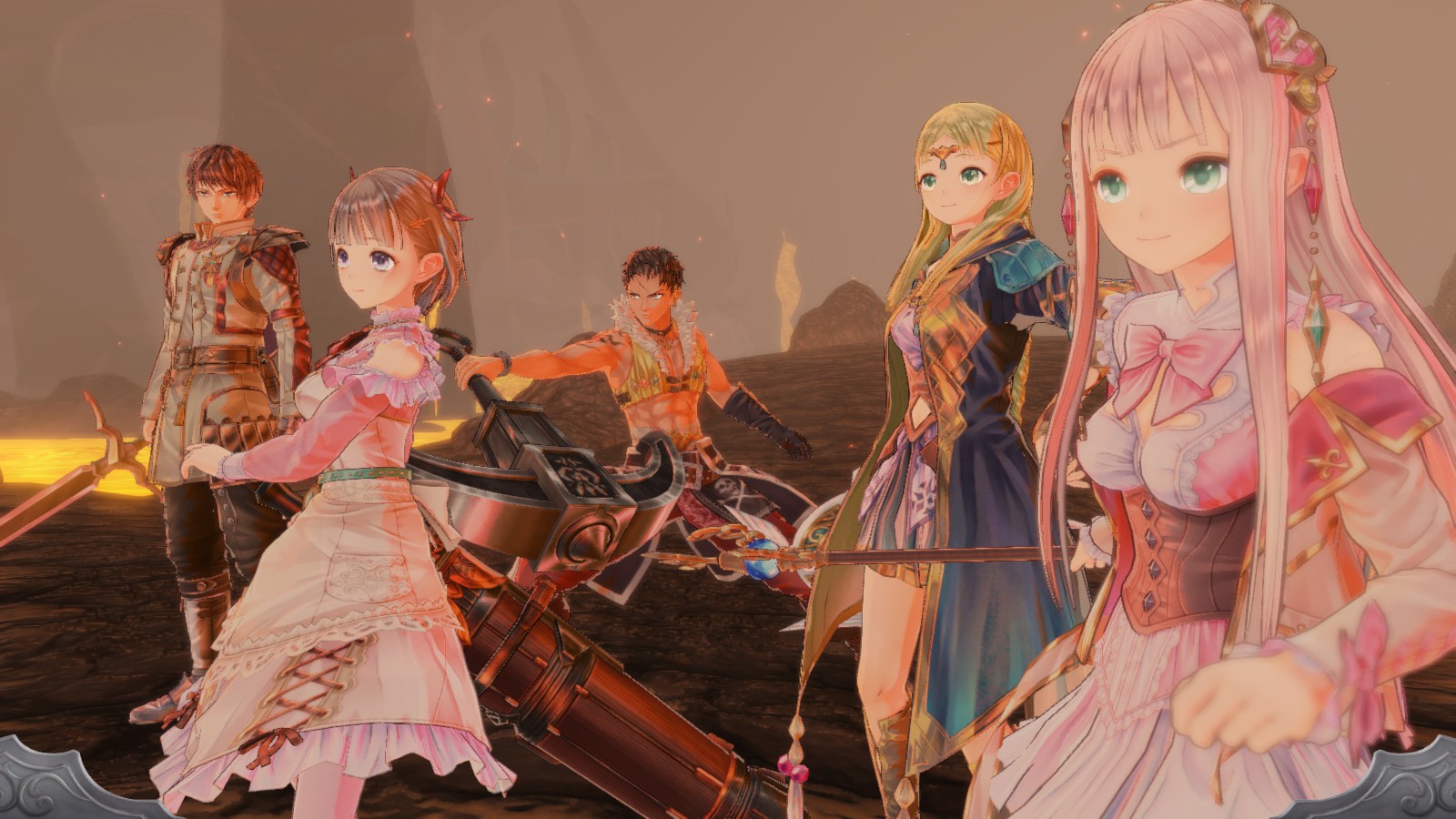
Graphically this game looks great. The character design and detail that I have come to expect from an Atelier title is there and I am not disappointed in any way. The amount of detail given in both the 3D models and the 2D scenes helps keep the game very visually appealing. The characters likely would have still looked good without the subtle intricacy that went into detailing even their clothes, but I definitely do enjoy the results of the designer’s labour. It’s also kind of nice that we get to meet the older versions of characters we met in the past and that their models have been suitably aged up and their characters act with a little more maturity. The various towns in the game all look and feel vastly different, but despite the graphical upgrades they still maintain their same feel from the previous games they were featured in. The enemies, despite the prevalent pallet swapping, all look good and most them are even highly detailed themselves.
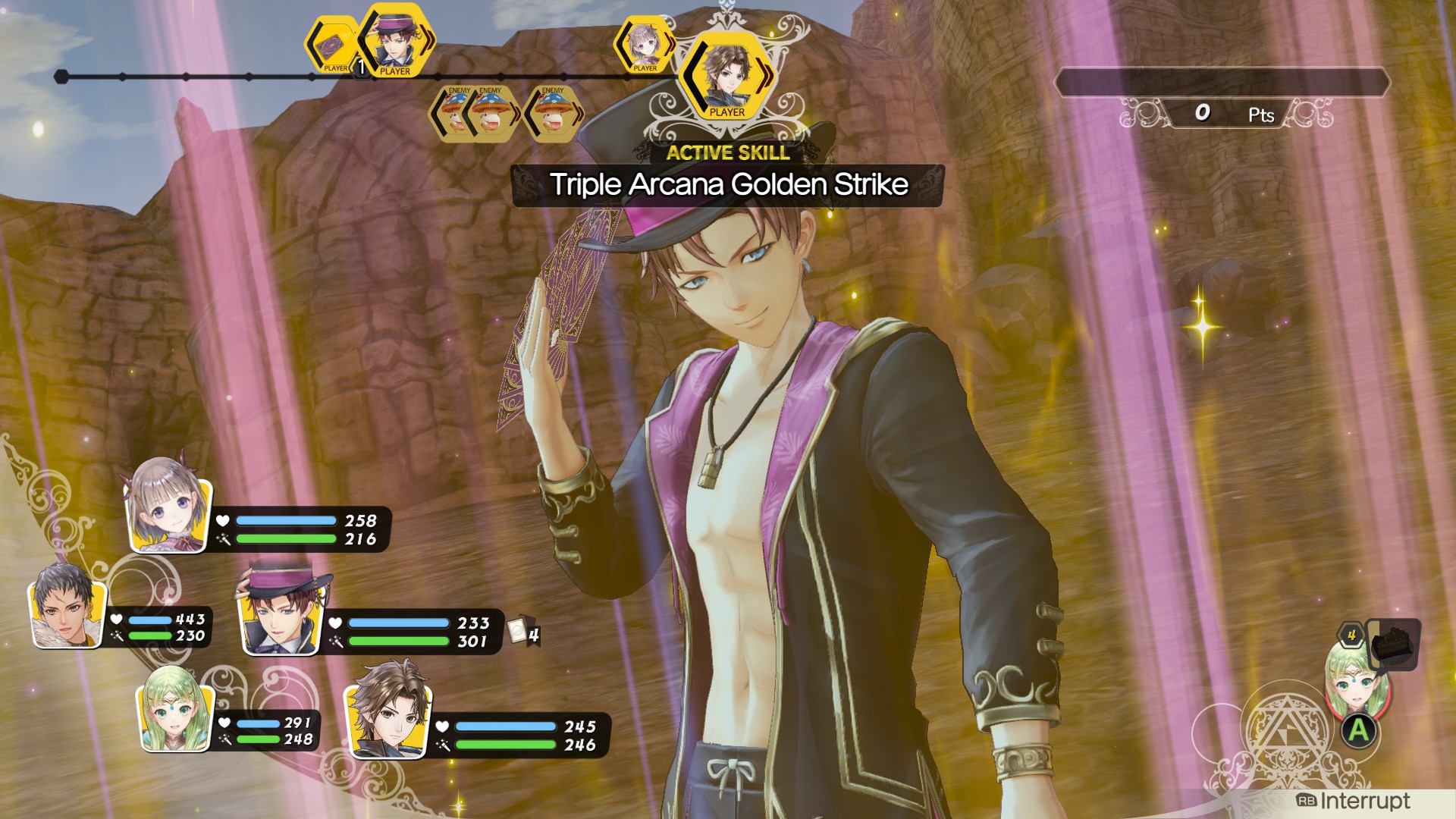
When it comes to sound and music, the Atelier series does not disappoint. I know I am a bit of a broken record at this point, but I’m still hoping that they go back to English dubs of the Atelier series eventually. I am getting better with each game though to the point where I swear they are talking English to me at times just because I can understand them without reading the accompanying text. Pretty much everything in the game is fully voiced in Japanese so if you understand Japanese, then it will likely be quite welcome to you. The music in this game is once again superb and someone listening from another room while I played it even commented on how nice the music was. It’s always a treat to hear the soundtrack of a modern Atelier game. The music helps set the mood and tone for whatever is going on at that particular time and never seems to get old.
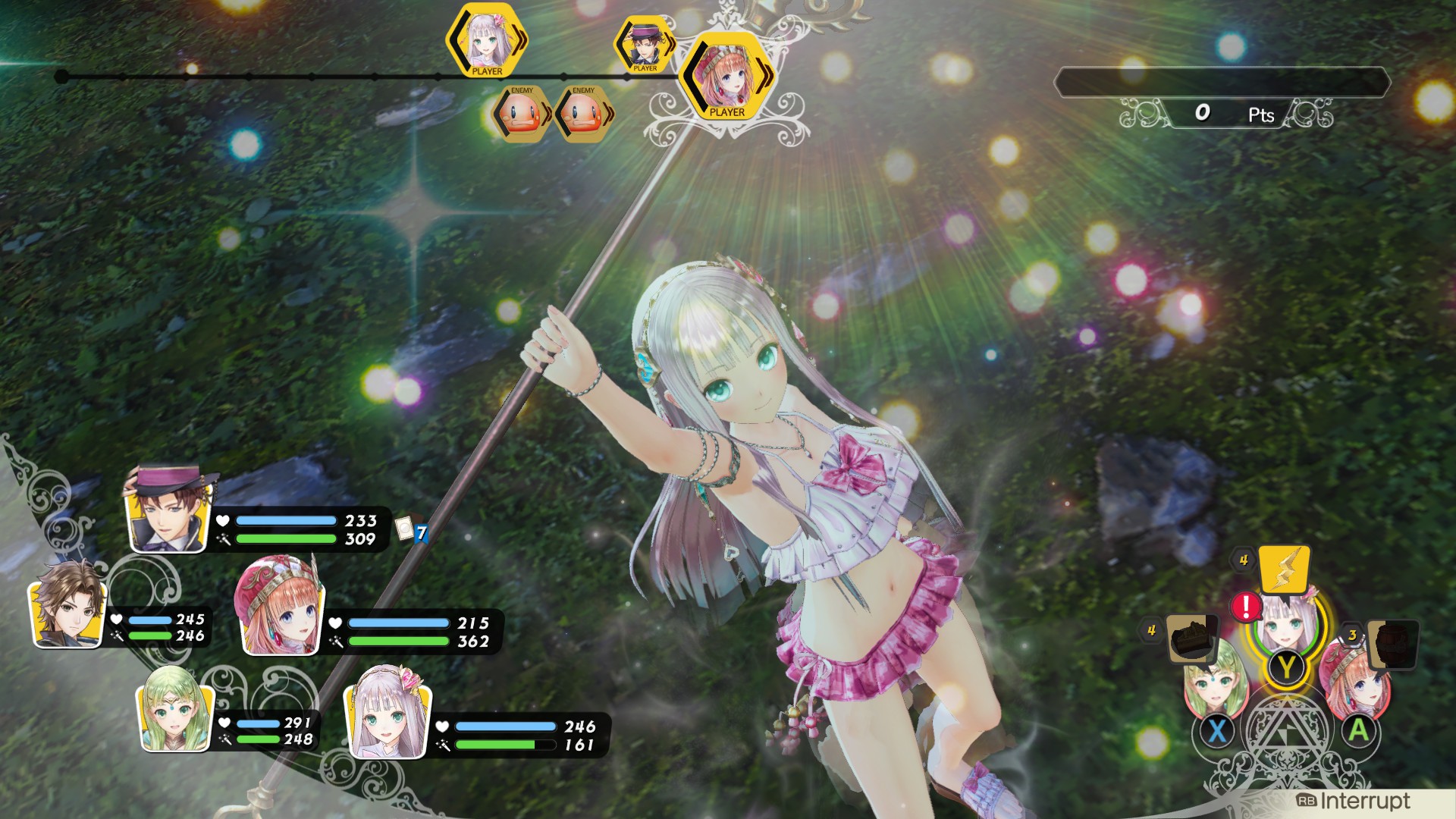
The controls and user interface work quite well this time around. Everything is easily accessed and you don’t have to dig around in the menus too much to find what you are looking for. I couldn’t seem to find the detailed sorting abilities that games like Atelier Rorona had, but it wasn’t that hard to sort by count, quality or elemental affinity at least. The character controls worked smoothly and the onscreen display told you what buttons to press so you didn’t really need to memorize them. Jumping between narrow platforms was a bit of a challenge, but not enough to really detract from the overall gameplay. The map screen was easy to navigate and even offered regional breakdowns in case you were having trouble locating a specific place you wanted to visit as well as telling you what you have previously discovered in those areas. Fast travel is available that allows you to easily spot where there are events taking place in a town or move to where you want to go without having to walk there. All in all, this user interface works very well with this sort of game and hopefully they will improve on this already good working interface rather than attempting to build an entirely new one for the next game in the series.
Verdict
So, should you pick up Atelier Lulua: The Scion of Arland? If you have already played the Arland trilogy and want to expand your experience there, then you should definitely pick it up. The gameplay is the culmination of the Arland series. If you are new to the Atelier series, this game actually could work quite well as an introduction to the series. You don’t technically need to know the story of the previous games to enjoy it. The game gives you enough backstory that you are able to piece together everything you would need to know to enjoy Lulua’s story. If you are a Visual Novel aficionado then you would also likely enjoy this game. While the typical interactive elements are replaced by the combat and alchemy elements, it is still very heavily story driven with a lot of character interactions. Overall, Atelier Lulua: The Scion of Arland is definitely a game I am happy to save.

